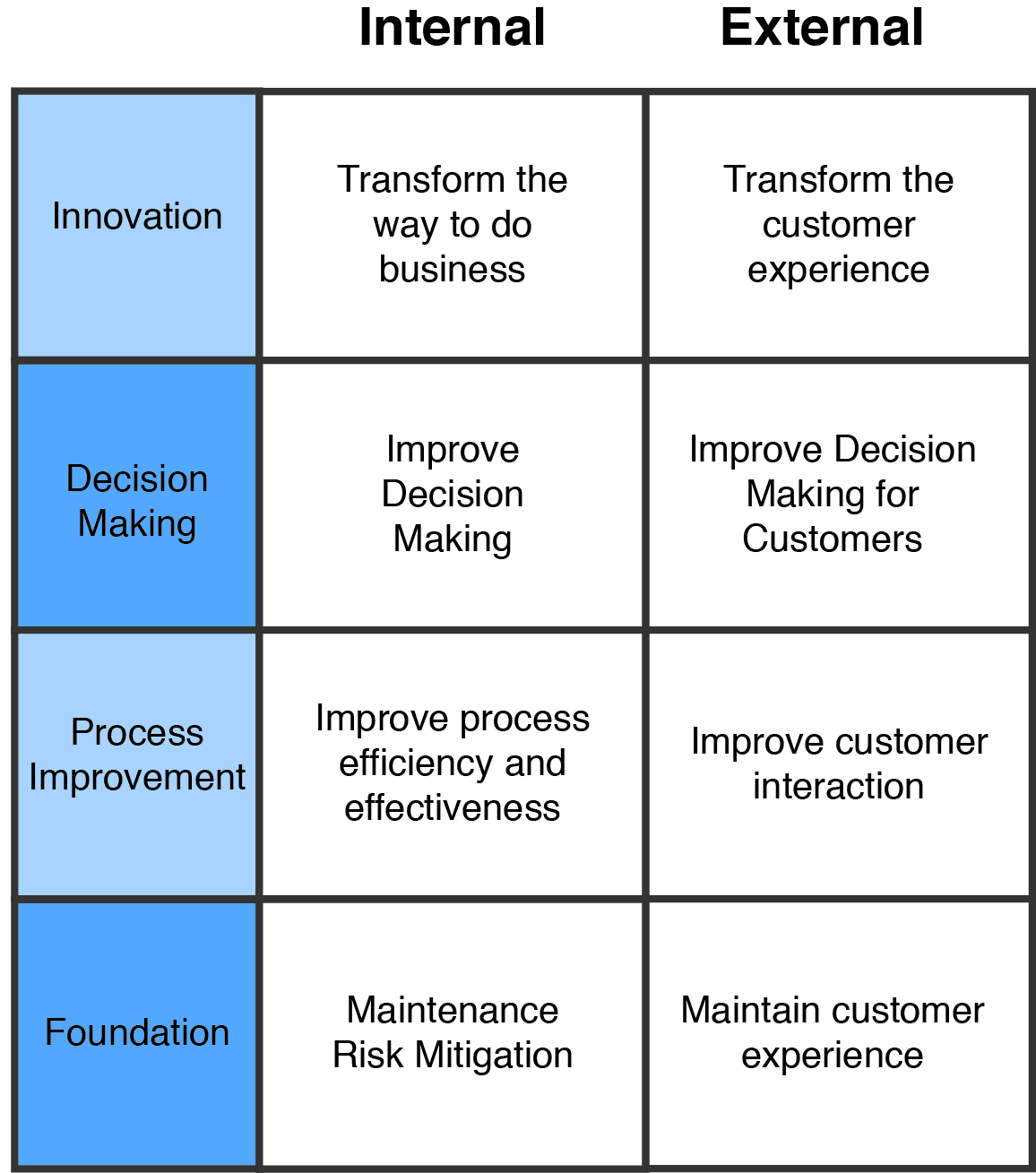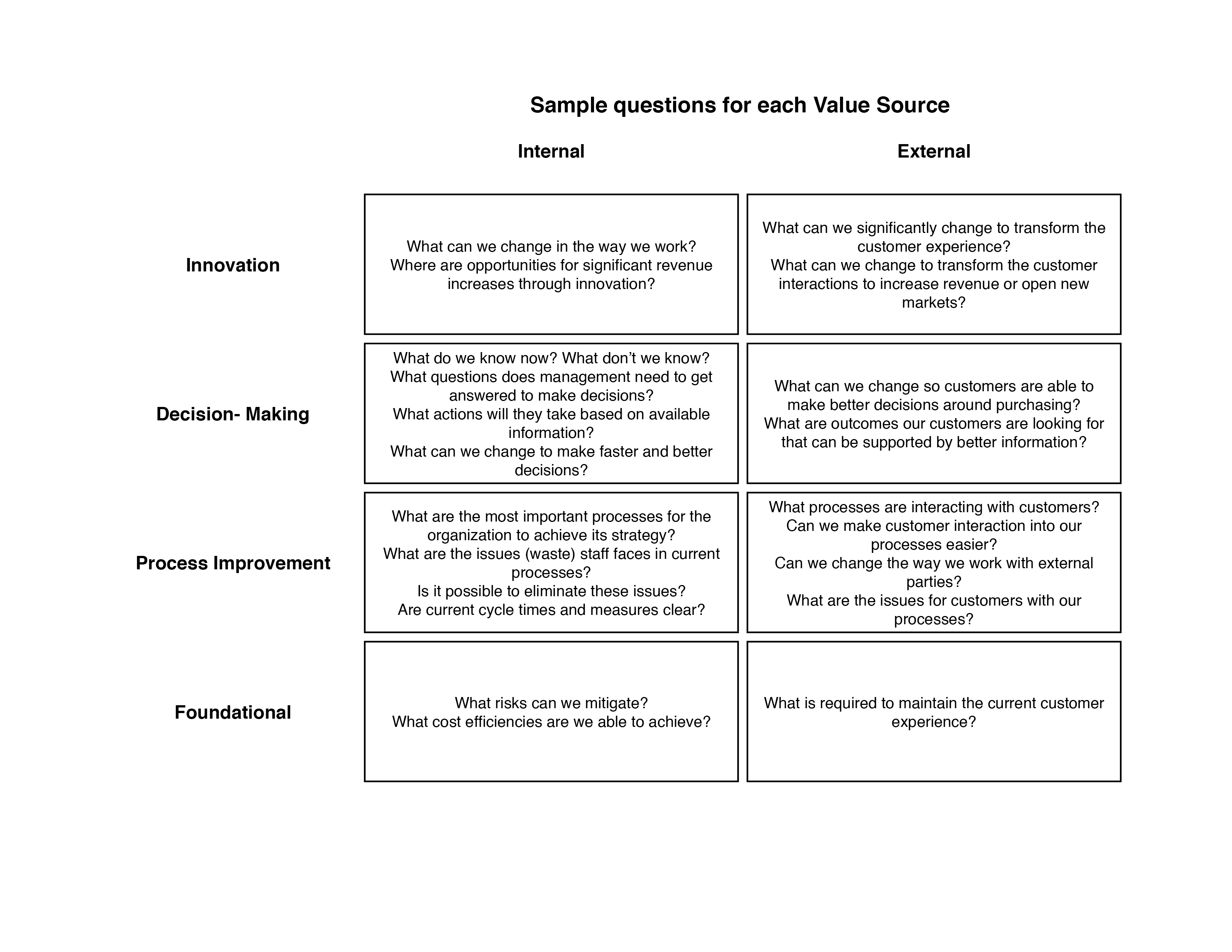“X” Marks the Spot: Finding Sources of Value
by Peter Lijnse
 Modern culture has popularized the golden age of buccaneering. Disney created “Pirates of the Caribbean” and introduced “Yo Ho (A Pirate’s Life for Me)” as an anthem for sailing the seven seas. Years before, Robert Louis Stevenson’s book, Treasure Island, painted a vivid picture of swashbucklers with hoards of doubloons buried on a secret tropical island. This fascination with discovering hidden gold has permeated society’s imagination—even landlubbers know the basics for finding treasure: follow the map, use a compass to navigate the journey, and then dig wherever “X” marks the spot.
Modern culture has popularized the golden age of buccaneering. Disney created “Pirates of the Caribbean” and introduced “Yo Ho (A Pirate’s Life for Me)” as an anthem for sailing the seven seas. Years before, Robert Louis Stevenson’s book, Treasure Island, painted a vivid picture of swashbucklers with hoards of doubloons buried on a secret tropical island. This fascination with discovering hidden gold has permeated society’s imagination—even landlubbers know the basics for finding treasure: follow the map, use a compass to navigate the journey, and then dig wherever “X” marks the spot.
Funnily enough, this process is very similar to the way in which today’s corporate heroes can discover business value. First, BRMs should know the organization’s strategy. They can then use the tools presented in this article to find potential value opportunities and “dig” for answers. The only difference is that the real treasures of today’s corporate world are the sources of business value, whatever they may be. Read on to learn where “X” marks the spot, and how to find these sources of value.
-
Follow the Map: Understanding the Sources of Value
Value Management consists of three phases: Value Discovery, Value Creation, and Value Optimization. The essence of successful Value Management is understanding where value can be created. In the Value Discovery phase, the question is: how do we add business value to the organization or its customers? The answer is usually multifaceted, because potential value can be found in many different areas of the business. We typically look for value intrinsic to the organization, as well as external value, which benefits customers. Sometimes potential value lies in preventing future issues, with a focus on maintenance, reliability, protection, and/or security. Innovation can also be a vital element of value, because it can create significant corporate value, both in short-term gains and long-run competitive advantage. In all cases, value should be driven by strategy. It is the “map” that guides our journey.
-
Navigate Using a Compass: Value Source Classification
A compass is essential for navigating a ship’s course relative to the cardinal directions of north, east, south, and west. In the Business Relationship Management world, the following four Value Source Classifications can help chart the course for finding business value:
- Foundation – operational changes and maintenance
- Process Improvement – the practice of improving process efficiency and effectiveness, both internally and externally
- Decision-making improvement – the practice of providing better information for easier or improved decision-making
- Innovation – a transformative way of doing business
Now “avast ye” (in other words, take a moment to pay attention!) and note that one size does not fit all when seeking value opportunities. Complex organizations have a multitude of stakeholders, all endeavoring to work together to execute strategy. Therefore, it is important to identify who the stakeholders are within each of the four value classifications, and to tailor value opportunities to meet their needs. Figure 1 provides further detail for this process by overlaying the Value Source Classifications with a dual focus of internal and external (customer) improvements.

Figure 1
It is also helpful to learn how the sources of value interact, and the net effects on various stakeholders. For instance, an improvement in internal decision-making could affect the value in process improvement, either negatively or positively. As always, the big picture counts.
-
Dig for Gold: Value Classification Questions
Land ahoy! The journey has been successful thus far, and the tropical island is now in sight. Grab the shovels and row ashore to the white, sandy beach. It is time to dig for gold by asking key questions in each value classification area. This, “me hearties,” is where “X” marks the spot.
The Value Classification Questions shed light on exactly what value each idea brings to stakeholders. The answers should be as specific as possible. Some sample questions for each Value Source are provided in Figure 2, below:

Figure 2
Often the discussion centers upon more easily quantifiable items, such as technical solutions or the economic model. However, the psychological value of innovation or improvement should also be considered. For example:
- How will staff be more satisfied with the way they work?
- Does this solution change the customer experience?
- How will increased technological response times affect staff or management?
The aim is to understand the sources of potential value and to be crystal clear on what value these ideas could bring to various stakeholders. Following that, the operational, financial, or strategic opportunities can be developed for net benefit. This is the coffer of bona fide corporate treasure.
Therefore, the principal goal of finding business value can be achieved through a defined process and useful framework. The steps are akin to searching for buried treasure: follow the map, use navigational tools, and then dig for gold where it makes sense. Guided by strategy, BRMs must seek to understand what potential sources of value exist in the organization. This is accomplished by identifying potential sources of internal and external business value using the Value Source Classifications, followed by asking key questions of every value source, in order to clarify the value that these ideas offer various stakeholders. Some of these answers will be focused on changing behaviour or anticipated changes in behaviour, and ultimately they must drive quality improvement for the company, both internally and for customers.
The golden age of buccaneering is long gone, but BRMs continue to be the protagonists in the modern corporate story. Instead of gold, they have the potential to find and create a treasure trove of business value for the organization and its customers. For more information on Value Management, visit www.instrumentalbrm.com and consider enrolling in our Value Management Workshop at BRMConnect 2016.
Until then, “Fair winds and following seas, matey!”